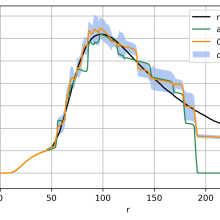In this study, Rebekka Kohlhaas, Ilja Kröker, and Sergey Oladyshkin from the Institute for Modelling Hydraulic and Environmental Systems (LS3/SimTech) joined multi-resolution PCE and GPE s into a joint surrogate framework to get the best out of both worlds: a global representation with local refinement that can estimate the uncertainty of the resulting surrogate. By doing so, they correct the surrogate bias and assess the remaining uncertainty of the surrogate itself. The resulting multi-resolution emulator offers a pathway for several active learning strategies to improve the surrogate at acceptable computational costs, compared to the existing PCE-kriging approach it adds the multi-resolution aspect.
They analyzed the performance of a multi-resolution emulator and a plain GPE using didactic test cases and a CO2 benchmark, that is representative of many alike problems in the geosciences. Our multi-resolution emulator leads to much more stable results than the GPE. Overall, our suggested emulator can be seen as a generalization of multi-resolution PCE and GPE concepts that offers the possibility for active learning.
Extracted from: https://doi.org/10.1007/s10596-023-10199-1
Publication:
Kohlhaas R, Kröker I, Oladyshkin S, Nowak W. Gaussian active learning on multi-resolution arbitrary polynomial chaos emulator: concept for bias correction, assessment of surrogate reliability and its application to the carbon dioxide benchmark. Computational Geosciences 27, 369–389 (2023).


